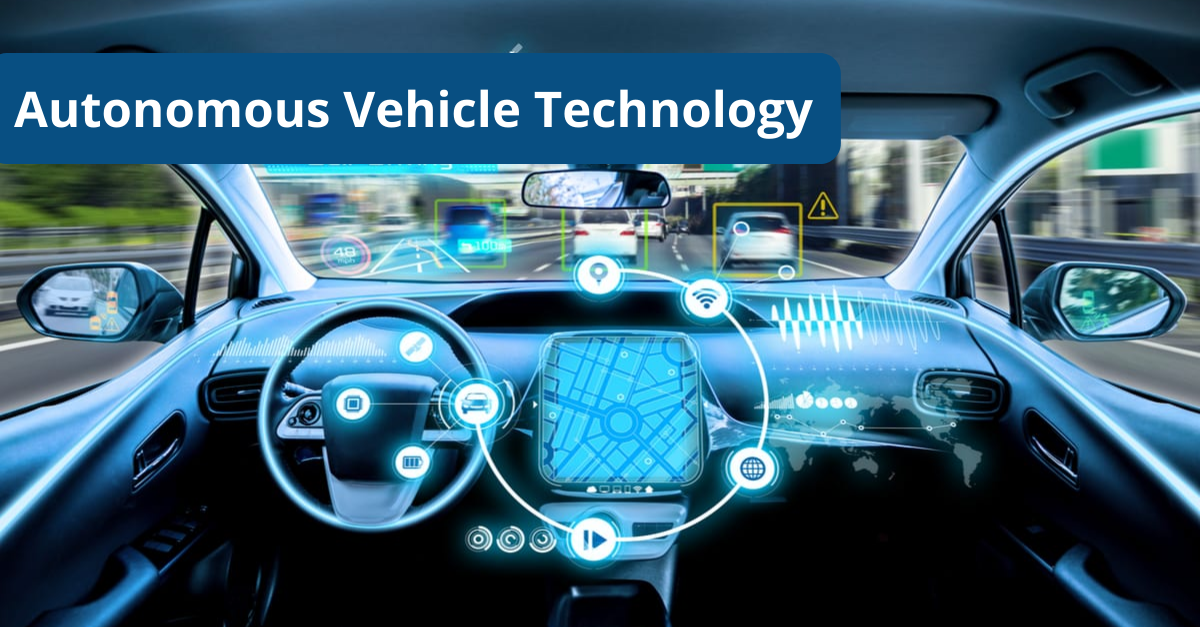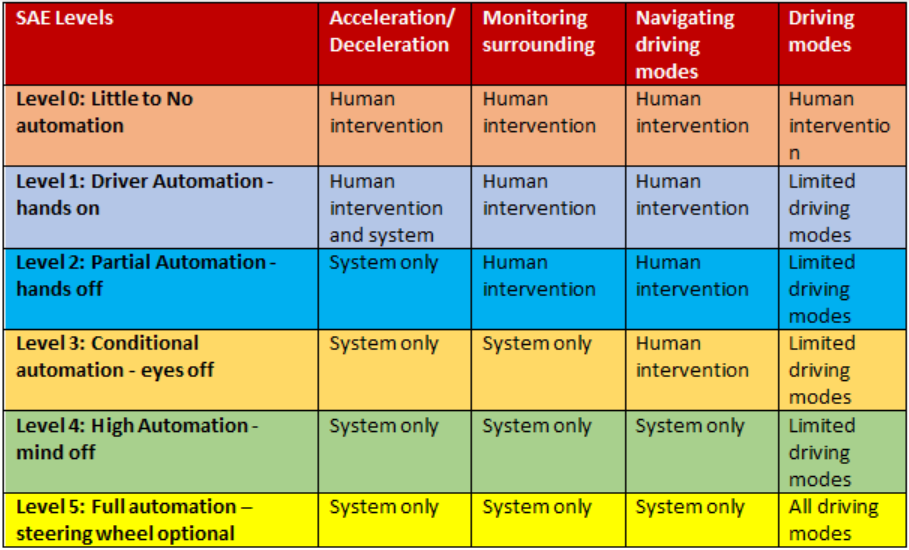Don’t we always wonder what actually gives vehicles the ability to be autonomous? As laymen, we do know that that there are sensors, AI, and complex algorithms involved. However, now we will dive deep into an overall view of the current standards for development technology, the architecture used, and the scope of autonomous vehicles in the future!
In order to understand autonomous car technology, we first need to understand the standardized autonomous levels declared by the SAE (Society of Automotive Engineers)!

Who is the SAE? Why are they so important?
The SAE was initially conceptualized in the 1920s when multiple automobile manufacturers wanted a forum to exchange their ideas and revolutionize the industry. They gradually grew and are now a forum for companies, government agencies, research institutes, and consultants to set technical standards and recommended principles and practices for the design and construction of automobile components. However, they do not have any legal power but their work is often used for reference by US National Highway Traffic Safety Administration and Transport Canada.
Now, let’s analyze some of the factors we will be taking into account to define these levels.
- Acceleration/Deceleration: This factor helps us analyze if this needs to be done by a human or by the system
- Monitoring surroundings: Does the car need human intervention to navigate its way around obstacles or will the system do it
- Driving Modes:These are scenarios that a system/human would have to consider. Driving modes would include an increase in speed on highways and a decrease in speed in traffic jams, expressway merging, closed campus operations, etc.
- Navigating driving modes:This factor will analyze if the human will switch between the driving modes mentioned above or the system?
Given below is a table with the description of SAE Levels and the intensity of automation require for each level
Now that we know the level of automation involved in each of the levels we can further our discussion about the technology and architecture of these autonomous cars
So where are we now? How many of these levels have autonomous vehicles reached today?

What about automation above Level 3?
As of November 2021, vehicles operating at Level 3 and above are only a minor portion of the market. There are multiple trials going on and some of the cars greater than automation of Level 3 have been implemented. For example:
- Waymo is the first in the market to provide driver-less taxi rides to the general public in a small part of Phoenix, Arizona in 2020. There is no driver in the car but vehicles are being monitored remotely by Waymo staff using cameras.
- Honda is the first manufacturer to provide a legally approved Level 3 vehicle
- Toyota deployed a Level 4 service car around Tokyo 2020 Olympic Village
- Nuro is given the permit to kick off autonomous car commercial delivery operations in California in 2021
- AutoX initiated two publicly accessible trials of robotaxis in Shenzhen and Beijing in 2020
As we can see further trials and testing need to be performed before we see automated cars above Level 3 automation in the market in large amounts. However, the key market players are utilizing their resources to the best of their abilities to develop such cars.
Now, let’s analyze the software functional requirements for these cars in order to operate successfully

Navigation
♦ Factors to be considered: location detection, electronic map or GPS, map matching, path planning, environment perception, laser perception, radar perception, visual perception, vehicle control over speed and direction.
♦ Algorithms based on Sensor Fusion to integrate data from multiple sensors to provide the car with a useful view of the environment. They also utilize machine vision for visual object recognition
- Bayesian simultaneous localization and mapping (SLAM) algorithms that take data from multiple sensors and an offline map and merge it with current location estimates and significant updates from the map
- Real-Time Locating System (RTLS) help with localization
- Deep Neural Networks: Create and implement a neural network that consists of data from real-life scenarios so that the neural network can learn how to implement the best course of action while driving .
- New tools: Maplite can help cars drive without 3D maps and allows cars to drive on roads that they have nevertraveled before. It collates the GPS position of a vehicle, Open Street Map software that consists of 2D features of roads, and multiple sensors that observe road conditions.
Storage of Homogenous data:Data collected by sensors, GPS, vision recognition tools and radar needs to be interpreted in the same form by the operating system of self-driving cars. ISO/TC 204 is in charge of information for intelligent transport systems and the international standard domains are connectivity, human interaction, AD/ADAS functions, map positioning, privacy, security and in-vehicle system engineering
Vehicle Communication Systems:All autonomous vehicles on a particular road communicate with each other in a P2P network and exchange information. The multiple sensors and radars store large amounts of data and these digital traces can be used to incorporate vehicle communication systems No complete implementation of this software yet. However, if the implementation is successful, it can enable automated cars to function efficiently in detecting obstacles and we might reach SEA Level 6. This is desirable because computer vision cannot accurately detect obstacles.
Reprogramming:Autonomous vehicles should have a heavy focus on the software since the software is what enables the self-driving feature. Updates should come from suppliers but since these are smart vehicles, they should be able to reprogram and install significant updates themselves due to machine learning and allows for continuous improvement of the product. This, however, is still work in progress.
What can iSmile Technologies do?
As we have seen so far, only SEA Level 0-2 cars have been implemented and introduced in the public and SEA Level 3 and above are still in their testing phase and very few models have been released to public. iSmile Technologies can conduct research on how to achieve desirable architecture for autonomous vehicles. We can focus on Vehicle communication systems and reprogramming.









